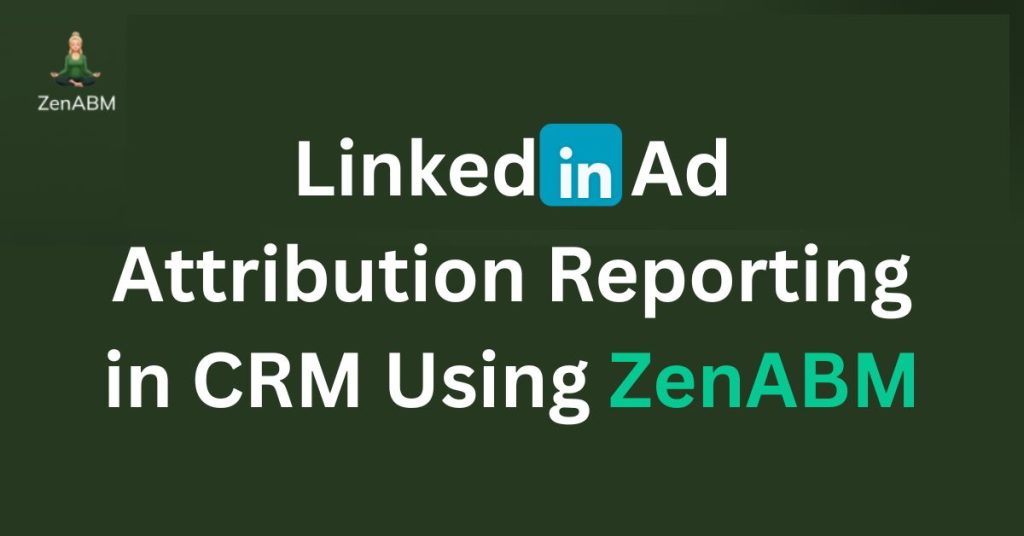Buried in LinkedIn ad stats, yet unsure which touchpoints move the pipeline inside your CRM?
This guide reframes your setup around LinkedIn ad attribution reporting in CRM. I pulled the most consistent, practical guidance from expert sources and combined it into one playbook you can apply to ABM today.
You will also see where ZenABM fits when you want verified ad influence data inside the CRM.
LinkedIn ad attribution reporting in CRM: quick summary
- Attribution that fits ABM: The aim is to show which accounts were influenced by which campaigns, not only who clicked. Your model must capture view-through at the company level.
- Where most stacks fail:
- LinkedIn Campaign Manager: Company metrics exist, yet roll up at the ad account. You cannot tie a given company to a specific campaign or creative, so dashboards stay coarse.
- Website deanonymization tools: Trigger on clicks only, sit near forty percent accuracy, and break on VPNs or shared IPs. Weak inputs for attribution.
- Display networks: Cookie-based graphs, stale identity, and bot noise. Not a durable foundation for automated influence reporting.
- CRMs such as HubSpot: Focus on the form submit. Multi-user, multi-device journeys and view-through influence remain invisible.
- What you actually need:
- Company-level and campaign-level engagement that logs impressions even without clicks.
- Multi-touch attribution across campaigns instead of last click only.
- Direct CRM sync so fresh company engagement fields drive reports, lists, and workflows.
- How ZenABM closes the gap:
- Records every company that views or engages with each LinkedIn ad. No click required.
- Surfaces engagement per campaign and per company for precise attribution logic.
- Syncs these metrics to HubSpot as company properties for scoring, routing, and reporting.
- Calculates live engagement scores and flags surges.
- Tags campaigns by intent and exposes those themes to BDRs.
- Connects touches to opportunities and revenue so your CRM reports show real ROI.
- Runs on first-party LinkedIn API data. Compliant and reliable.
- Bottom line: Click-centric setups undervalue LinkedIn. Account-centric attribution inside the CRM shows full funnel influence.
- Try ZenABM to operationalize LinkedIn ad attribution reporting in CRM.
Why attribution matters for ABM inside the CRM
ABM is about precision, not volume. Your team works on a finite target list and needs proof that campaigns are nudging those companies forward. Only about five percent of the market is in play at any given time. Attribution that captures early ad exposure helps sales meet that five percent at the right moment and supports budget calls with revenue evidence.
Why click first metrics undercount LinkedIn influence
LinkedIn reaches the right people yet clicks are scarce. Average CTR hovers near 0.4 to 0.5 percent.
That does not mean the other 199 impressions had no effect. People often see an ad, search for your brand later, or come direct. If you score or attribute only on clicks, the CRM credits search or direct, and LinkedIn’s assist disappears. In ABM, members of the same buying group act at different times. Your reporting must reflect the account, not a single person’s last action.
How LinkedIn analytics reveal ad influence
LinkedIn’s Companies tab added a useful view of impressions and clicks by company.
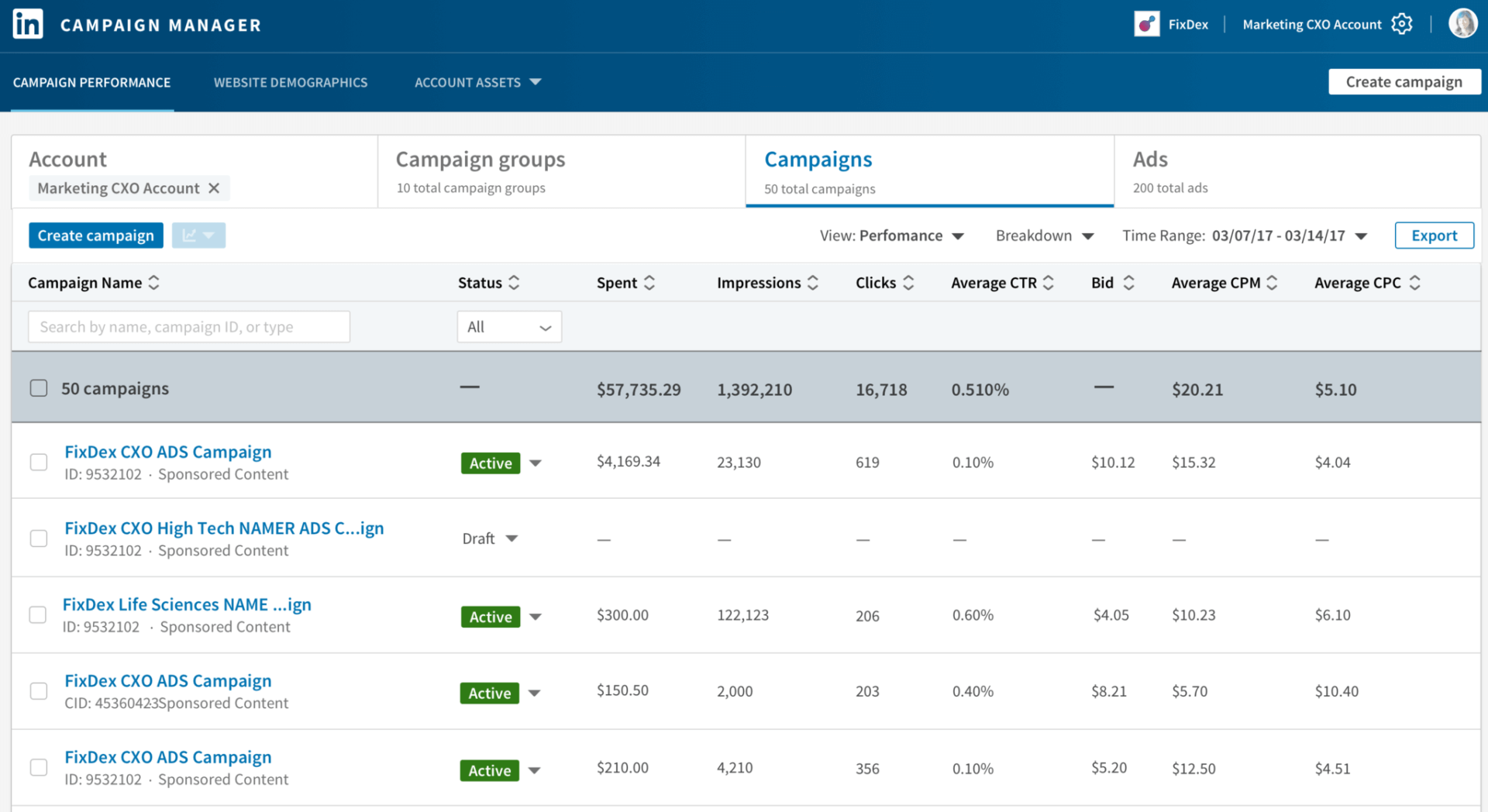
The limitation is granularity. Native UI aggregates at the ad account level, so you cannot tell which campaign or message triggered attention. If you run multiple themes, that lack of detail blocks true attribution and limits coaching for sales. Pulling company-level, campaign-level data via API or a tool like ZenABM solves this and reveals which storyline a company is responding to.
Attribution data points to prioritize
Impressions
Show exposure. Include them in to credit view-through, then weight modestly. Watch for sudden jumps, which can flag new interest inside the account.
Clicks
Indicate active interest. Weight above impressions. CTR at the account level helps separate casual exposure from intent.
Engagements
Reactions, comments, and shares signal resonance on the platform. Treat comments and repeated reactions as stronger touches.
Lead gen form fills
Top-tier signals that can earn origin or heavy influence credit in your model.
Spend and reach context
Helpful for diagnostics. If exposure is high with little engagement, reassess the creative or the audience. Do not over-weight spend in attribution.
Build a LinkedIn ad attribution model inside your CRM
Step 1: Define touch types and sources
List what counts as a touch from LinkedIn ads. Include impressions, engagements, clicks, and lead gen forms at the company level.
Step 2: Choose a model
Start with linear or position-based. Early touches get some credit, mid-funnel education gets credit, last touch keeps emphasis without stealing the entire value.
Step 3: Set lookback windows
Pick windows for view through and click through. Example: 90 days for influence, 30 days for origin.
Step 4: Weight recency and depth
Give recent touches more value and weight lead forms and comments above pure views.
Step 5: Define influence thresholds
Require a minimum number of impressions or engagements from a company before a deal is considered influenced. This reduces noise.
Step 6: Test, compare, and document
Backtest against won deals. Publish the formula so marketing, RevOps, and sales align on what the numbers mean.
How ZenABM enables LinkedIn ad attribution reporting in CRM
First-party pull from LinkedIn Ads
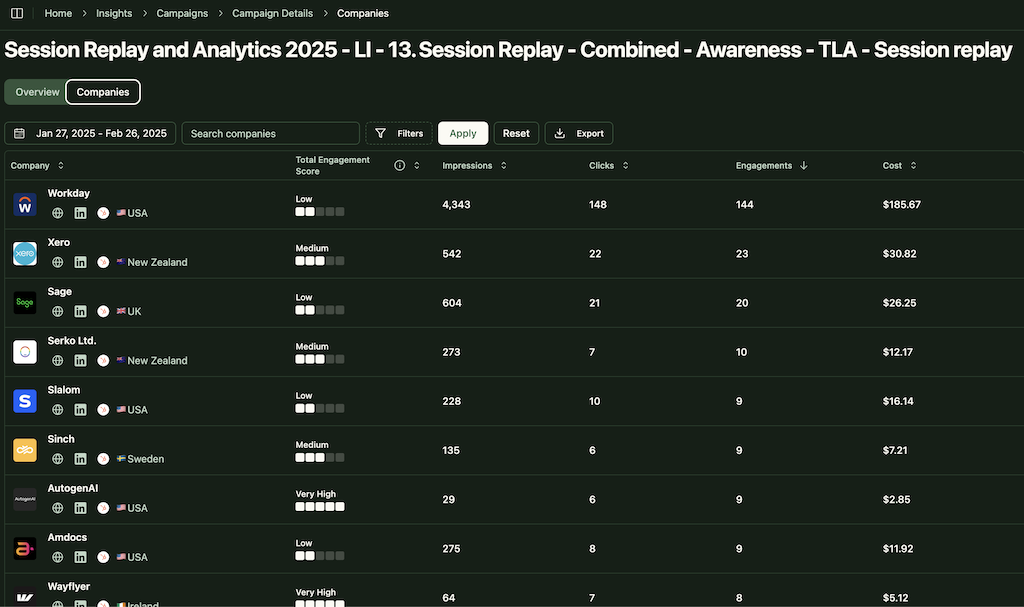
ZenABM connects to the LinkedIn Ads API and retrieves company-level engagement for each campaign and group. No scraping and no cookies.
Campaign timelines and multi-touch views
In ZenABM, you can see the contribution of each campaign and not just last-touch attribution:
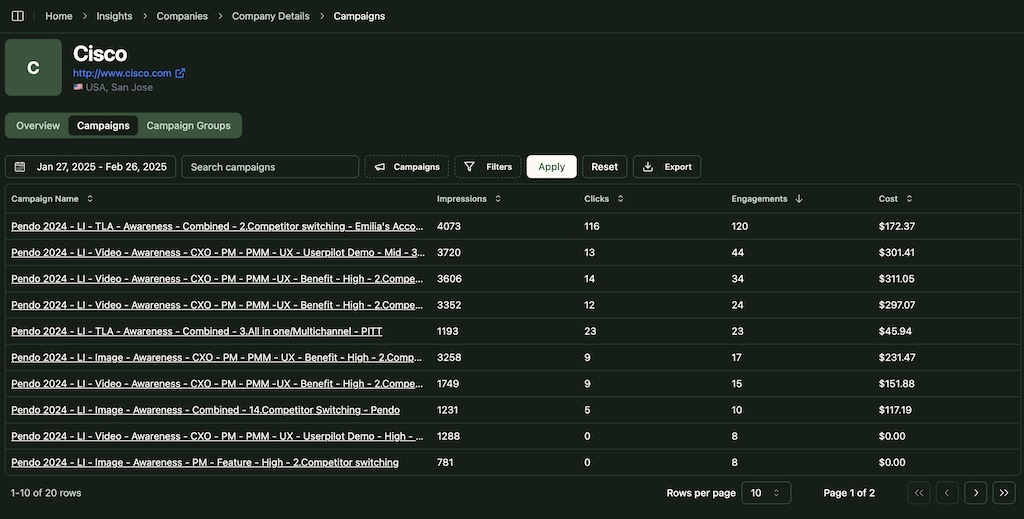
Automatic CRM sync
ZenABM pushes all the company-level ad engagement data automatically to your CRM as company property:
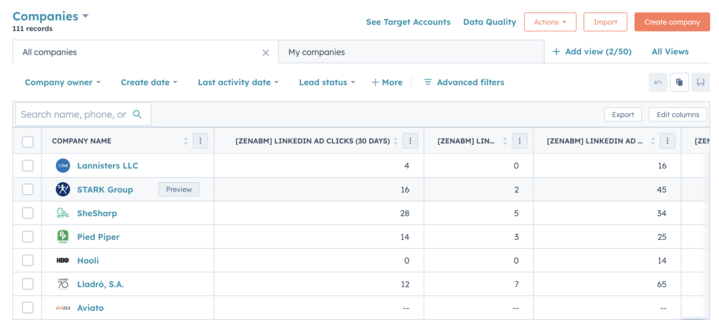
Scoring, routing, and intent context
- ZenABM assigns hot accounts to BDRs in your CRM automatically:

- Tag campaigns by use case or feature. ZenABM clusters accounts by those tags so reps know which narrative to lead with:
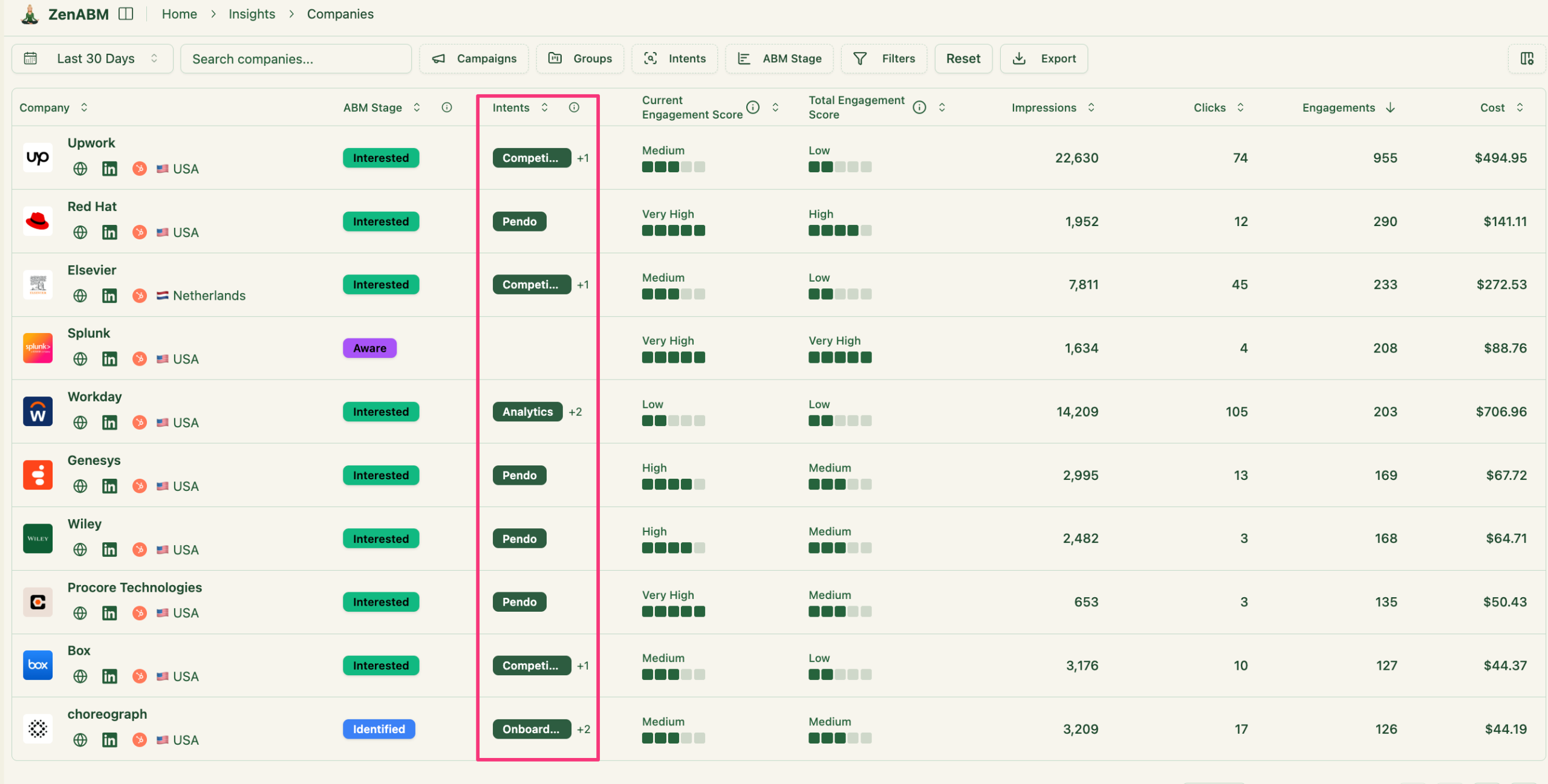
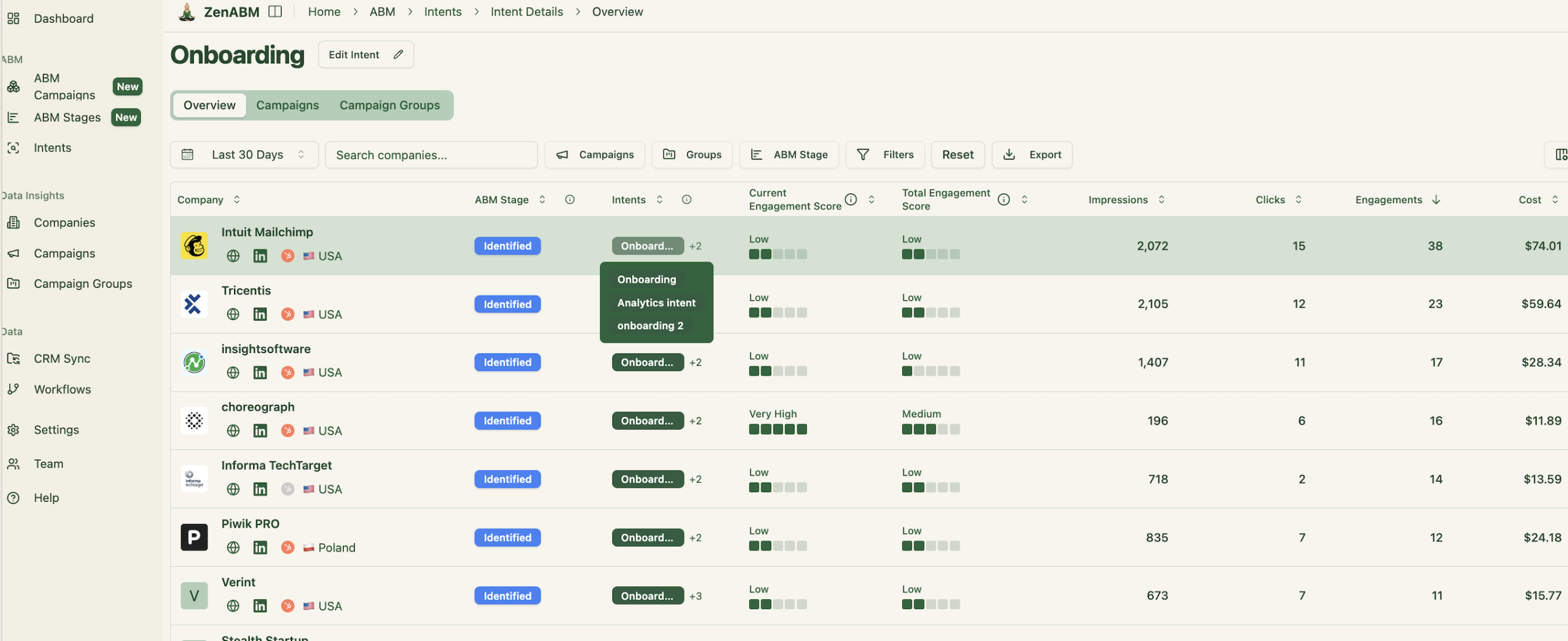
Pipeline and revenue attribution with dashboards

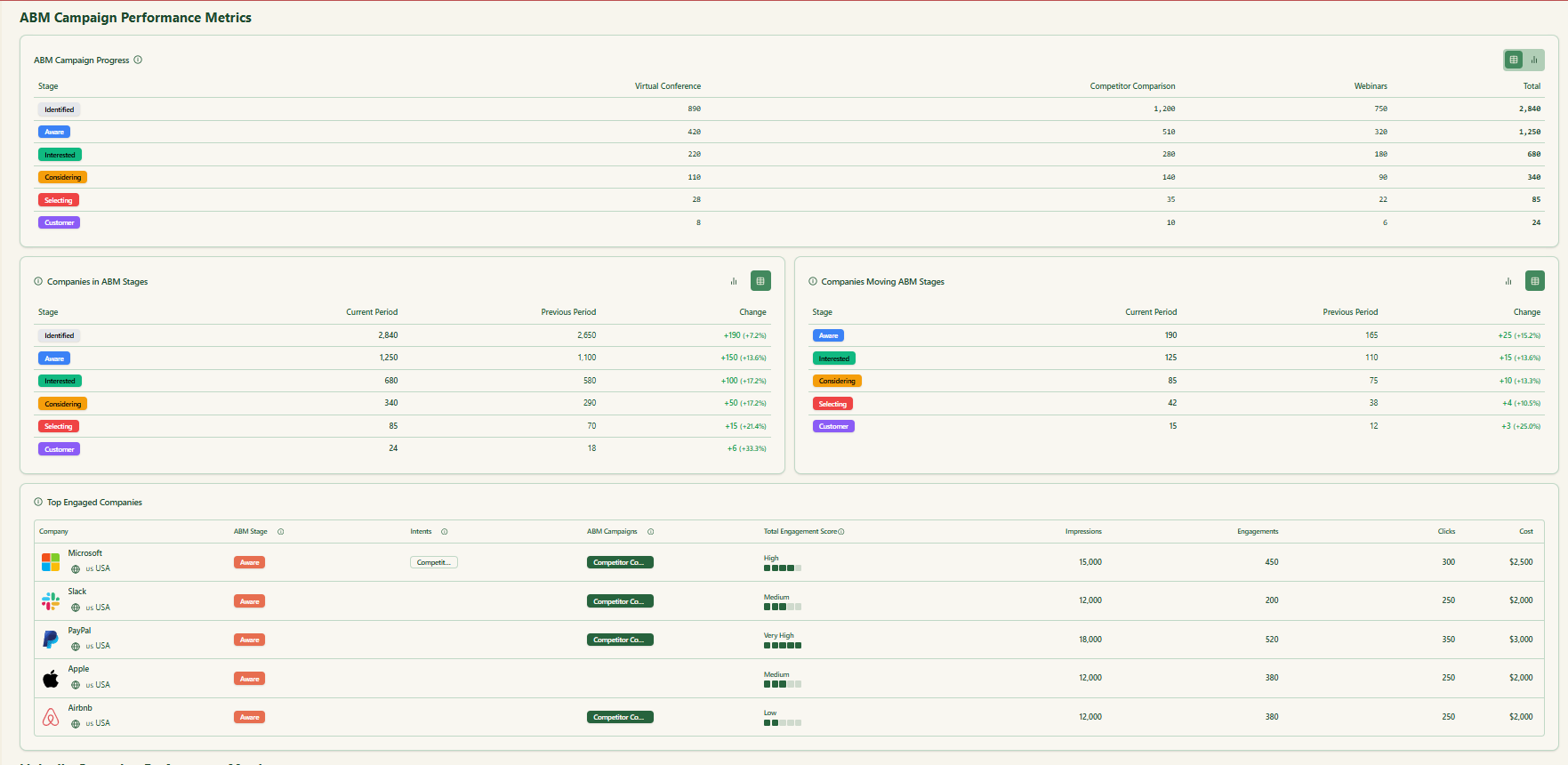

Tie spend to pipeline and closed revenue. Reports like influenced pipeline by campaign or ROAS by campaign group are available out of the box.
Compliant, first-party approach
All data comes from sanctioned LinkedIn APIs. No scraping and no fingerprinting. Reliable inputs for attribution and safe for your ad accounts.
Conclusion
LinkedIn ad attribution reporting in CRM should reflect the full account journey. Capture impressions, engagements, and clicks by company, align credit across campaigns, and sync the signals to your CRM so sales and leadership see the impact.
ZenABM makes this practical with first-party data, multi-touch attribution, live scoring, and ready-made dashboards. If you want to replace guesswork with clear revenue influence, book a demo or start a trial.

